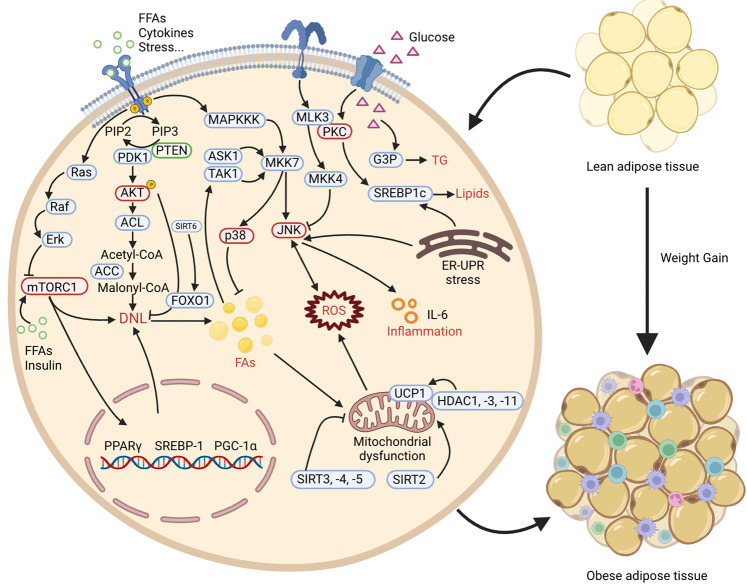Fig. 4.
Overview of the roles of PTM in obesity. Obesity is associated with excess calorie intake leading to excessive accumulation of adipose tissues. PTMs can regulate the activity of enzymes or cytokines associated with obesity, thereby engaging the occurrence and treatment of obesity-related metabolic diseases. (1) High glucose levels, for example after ingestion of carbohydrates, trigger the secretion of insulin from pancreatic β cells and the activation of a series of kinases downstream of PI3K, such as Akt, PKC, and mTORC1, which stimulates glucose uptake and utilization, and generate FAs that are taken up by adipose tissue. (2) Activated transcription factors, including SREBP-1, PPARγ and PGC-1α, for transcriptional activation to promote de novo lipogenesis. (3) Some HDAC family members inhibit the thermogenic program in BAT to regulate HFD-induced leptin resistance and obesity. Activation and inhibition effects are displayed in “arrows” and “inhibitors”, respectively. The figure is generated with BioRender (https://biorender.com). AKT protein kinase B, ACL ATP citrate lyase, ACC acetyl CoA carboxylase, FFAs free fatty acids, FOXO1 forkhead box O1, G3P glyceraldehyde 3-phosphate, JNK c-Jun N-terminal kinase, mTOR mechanistic target of rapamycin, PIP2 phosphati-dylinositol-4,5-bisphosphate, PDK1 3-phosphoinositide-dependent protein kinase 1, PTEN phosphatase and tensin homolog, PGC1 peroxisome proliferators-activated receptorγcoactivator 1, PPARγ peroxisome proliferator-activated receptor

